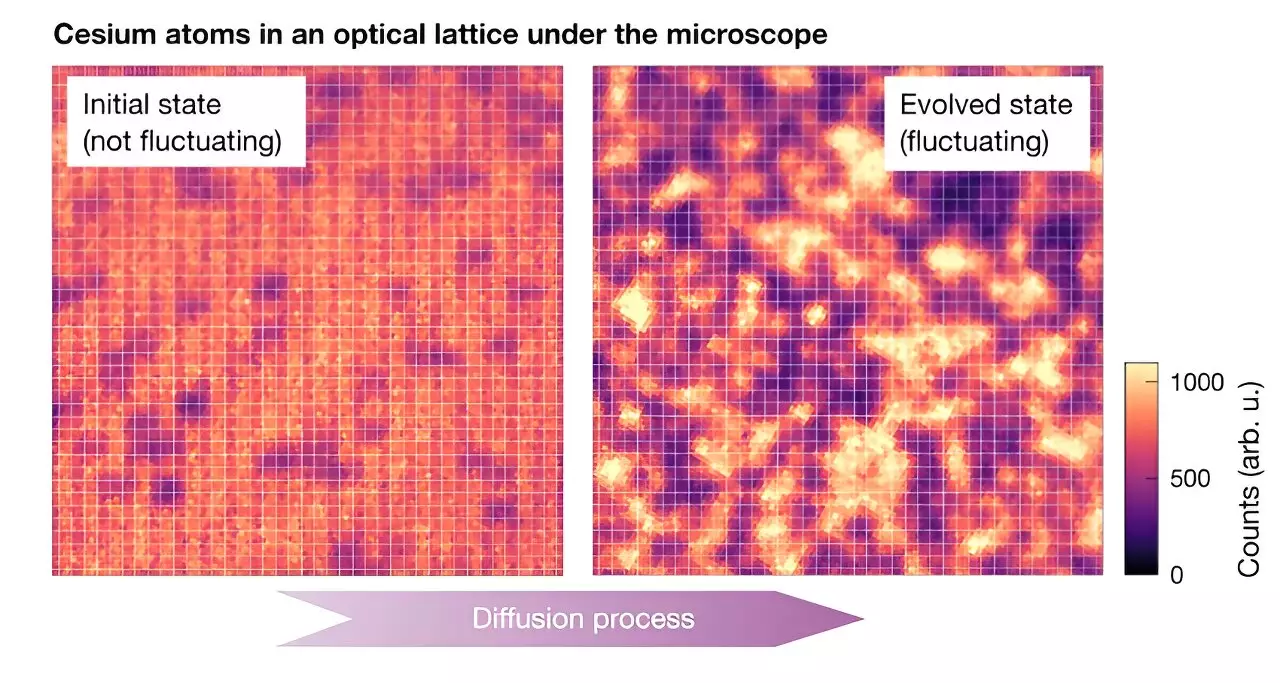In the rapidly evolving field of quantum physics, understanding the behavior of large-scale quantum systems poses considerable challenges. Researchers from Ludwig-Maximilians-Universität, the Max-Planck-Institut für Quantenoptik, and the University of Massachusetts have made significant strides toward deciphering the complexities of these systems through a groundbreaking study published in *Nature Physics*. By employing a sophisticated quantum gas microscope, the team investigated equilibrium fluctuations in quantum many-body systems, revealing novel insights into their underlying dynamics.
As Julian Wienand, one of the key authors of the research, articulates, the conventional method of predicting the behavior of numerous particles interacting inside a confined space requires immense computational resources. Traditional simulations that track the motion of each particle tend to encounter significant hurdles due to the sheer number involved. This lack of computational capacity can severely limit researchers’ ability to understand these intricate systems. However, Wienand and his colleagues propose a transformative approach: leveraging the principles of hydrodynamics.
Hydrodynamics serves as a bridge for researchers to simulate interactions among particles at a macroscopic level. When particle systems exhibit chaotic behavior, scientists can apply the concept of local thermal equilibrium to describe these interactions on a broader scale. This approach allows them to represent the individual particles as a continuous density field, which in turn can be modeled with simple differential equations. As particles in such an environment fluctuate unpredictably, the theory of fluctuating hydrodynamics (FHD) emerges, providing a framework that accounts for these small-scale thermal fluctuations.
FHD builds upon classical hydrodynamics by introducing an additional layer that incorporates these quantum effects. The study posits that the evolution of chaotic quantum systems can be understood through key quantities, such as diffusion constants, thus pointing the way forward for experimental exploration.
The execution of this research involved intricate experiments conducted with a quantum gas microscope designed to manipulate and visualize ultracold cesium atoms. By trapping these atoms in a laser-generated optical lattice, the researchers created an environment ideal for observing quantum interactions among many-body systems. The ability to discern individual atomic positions with high precision was crucial for their analysis, particularly in measuring atom number fluctuations and establishing statistical connections.
Wienand’s team prepared their system in an excited state, allowing atoms to move freely after altering the lattice’s depth—a process that facilitated thermalization. By monitoring the dynamics of these fluctuations throughout the thermalization process, they could compare the observed behaviors against theoretical predictions, thereby validating the fluctuating hydrodynamics framework.
One of the study’s most profound implications is the demonstration that the principles governing classical systems can indeed extend into the realm of quantum mechanics. Although quantum systems are inherently more complex due to phenomena like entanglement, FHD allows researchers to extract simpler, overarching behaviors from seemingly chaotic microscopic interactions.
The findings affirm that the behavior of such systems can be well characterized through fundamental quantities—specifically, the diffusion constant, which illustrates the relationship between equilibrium and non-equilibrium states. Wienand highlights that this innovative perspective links macroscopic dynamics to microscopic quantum physics in a manner that enhances predictive capabilities.
Future Research Directions
With the successful application of FHD in chaotic quantum systems, Wienand and his colleagues are poised to explore new dimensions of quantum many-body dynamics. Open questions remain regarding how fluctuations are manifested in systems failing to reach thermal equilibrium, as well as the behavior of higher moments like skewness and kurtosis. These inquiries seek to further extend the FHD framework to probe deeper into exotic systems and to refine its capabilities in describing complex observables.
Their ongoing research signifies a crucial step toward advancing our comprehension of the quantum world, unlocking the potential for future applications and technological breakthroughs. As physicists continue to tackle the intricate challenges presented by quantum systems, the integration of shifting paradigms, such as fluctuating hydrodynamics, will be essential in demystifying the complexities of quantum behavior.
The recent accomplishments in integrating fluctuating hydrodynamics with quantum research stand to enhance our understanding of chaotic systems significantly. This novel approach not only bridges the gap between theoretical frameworks and empirical observations but also promotes further investigations into the fundamental nature of quantum phenomena. Armed with new tools and perspectives, researchers are better equipped to navigate the perplexing landscape of quantum physics, heralding an exciting era of discovery and innovation.


Leave a Reply
You must be logged in to post a comment.